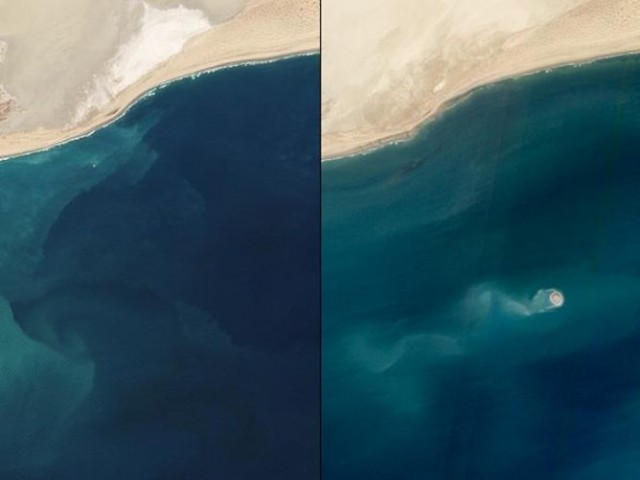Large earthquake causes mud island to rise from the sea
Ars Technica » Scientific Method 2013-09-26

A magnitude 7.7 earthquake hit south-central Pakistan on Tuesday this week. Reports of hundreds of casualties highlight the awful scale of the tragedy, made more difficult for rescuers by the remote location of the quake, 270km north of Karachi.
One of the surprises waiting for people who arrived in the quake’s aftermath was a new island. Just offshore near the site of the earthquake, the island appears to be a large pile of mud, built by the distinctive conditions in the area of the fault.
The quake was caused by movement of the Earth on a fault in the crust at rather shallow depth, around 15km below the surface. The movement at the fracture was a rupturing, as the oceanic crust of the Arabian tectonic plate is dragged down, or “subducted,” beneath the Eurasian continental plate at Pakistan. It is part of what geologists term the “Makran subduction zone,” which extends parallel to the Indian Ocean coast south of Pakistan and Iran.
Read 7 remaining paragraphs | Comments




